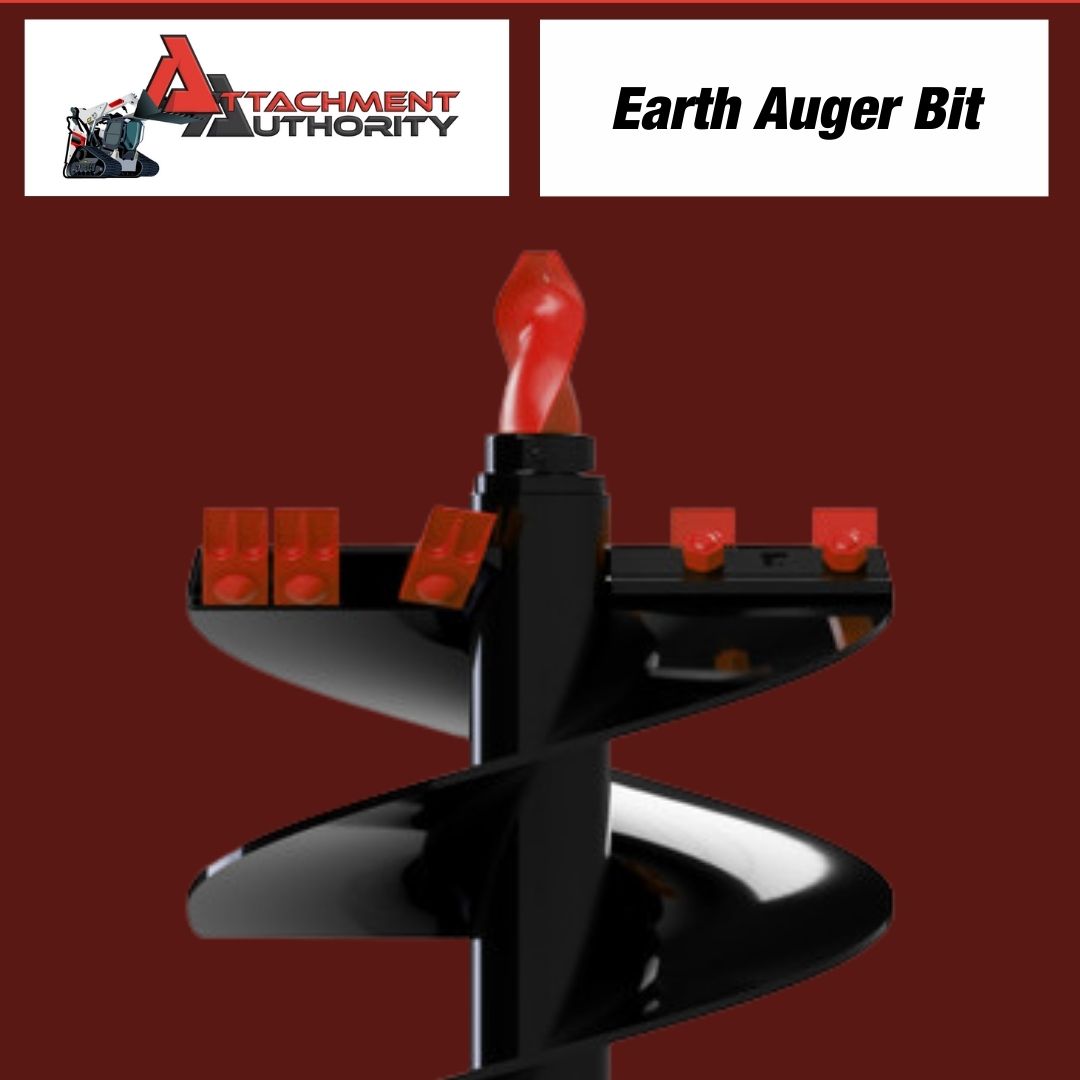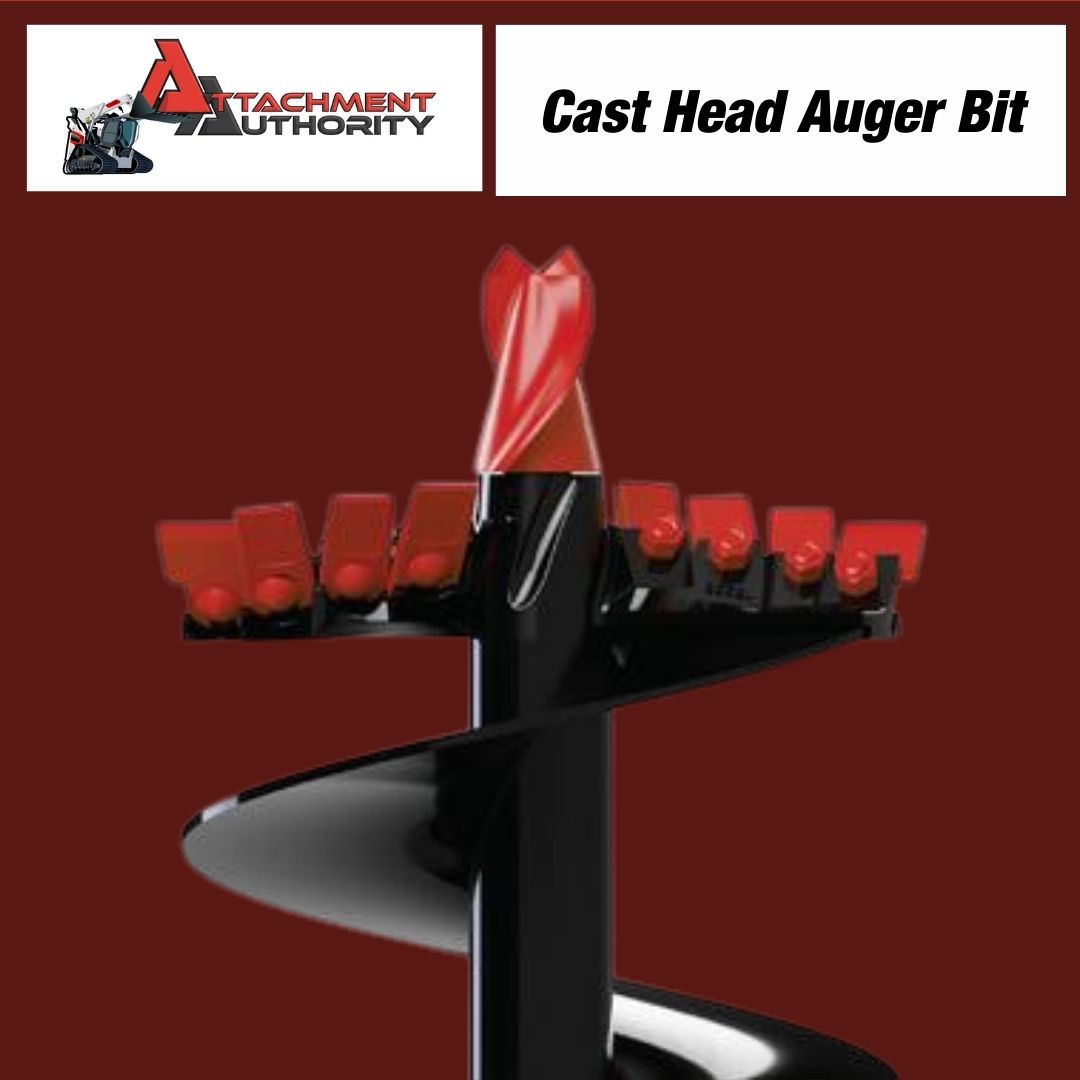Posted by Attachment Authority on Mar 21st 2024
Auger vs. Traditional Tree Planting Methods: A Comparative Analysis
Using an Auger vs Traditional Tree Planting Methods
When it comes to planting trees, whether for landscaping, reforestation, or agricultural purposes, the method you choose can significantly impact the success rate of your planting efforts. Two common methods stand out: using an auger and traditional hand-planting techniques. In this comparative analysis, we'll delve into the auger method versus traditional tree planting methods, highlighting their advantages, limitations, and ideal applications. So, let's dig in and help you decide which method suits your green thumb ambitions best!
What's an Auger and How Does It Work?

An auger, for those who might not be familiar, is a tool or machinery attachment designed to bore holes into the ground. It operates on a simple principle: a spiraling metal shaft with a cutting or digging end rotates to remove soil, creating a hole. Augers can range from hand-held devices to large attachments for machinery like skid steers or excavators, which are particularly effective for large-scale projects. The efficiency and precision of augers make them a go-to choice for many landscaping and agricultural professionals.
Advantages of Using an Auger
Augers are a standout choice for tree planting, transforming efficiency and quality across diverse projects. Here's how:
- Efficiency: Dramatically cuts down time and labor, particularly in extensive plantings, streamlining the entire process.
- Consistency: Guarantees uniform hole sizes, giving every tree equal opportunity for a healthy start by ensuring consistent conditions.
- Versatility: Available in various sizes, augers can tackle different tree sizes and adapt to varying soil conditions, offering a solution for nearly any project.
- Reduced Labor: Especially in larger projects, using an auger attachment minimizes the physical strain on workers, accelerating project timelines and potentially cutting down on labor costs.
In summary, augers bring unmatched efficiency, ensure uniform planting conditions, offer flexibility across projects, and reduce labor demands, making them a crucial tool for anyone looking to optimize their tree planting efforts.
Traditional Tree Planting Methods
Traditional tree planting methods embody the essence of hands-on agriculture and landscaping, requiring individuals to engage directly with the earth. This age-old technique involves the meticulous process of manually digging holes using basic tools such as shovels or spades. Once the hole is created, the next step involves preparing the soil, which may include enhancing it with nutrients or adjusting its composition to suit the specific needs of the tree being planted. Finally, the tree is carefully placed by hand into its new home, where it will hopefully thrive for years to come.
This method is undeniably labor-intensive, demanding significant physical effort and time from those undertaking the task. However, it's this very hands-on approach that grants planters a high degree of control over each planting site. Every hole can be tailored to the exact requirements of the tree, considering its size, root structure, and specific soil preferences. This meticulous attention to detail ensures that each tree has the best possible start in its new location.
Advantages of Traditional Tree Planting
- Precision: Hand digging allows for adjustments based on the specific root structure of each tree.
- Cost-Effective: For smaller projects, traditional methods require minimal equipment investment.
- Flexibility: It’s easier to adjust the planting location or depth on the fly without needing specialized equipment.
 Choosing Between Auger and Traditional Planting
Choosing Between Auger and Traditional Planting
In the world of tree planting, the choice between using an auger and traditional methods significantly hinges on several key factors: the scale of the project, the type of soil involved, and budget considerations. Each of these elements plays a crucial role in determining the most suitable approach for planting trees efficiently and effectively.
- Scale: When it comes to planting trees on a large scale or within tight timelines, the superiority of augers is undeniable. These powerful tools are designed to handle vast numbers of trees quickly, drilling holes in the ground with remarkable speed and consistency. This capability makes augers an invaluable asset for commercial landscaping projects, reforestation efforts, or any scenario where time and scale demand rapid, uniform results. On the other hand, smaller projects, such as home gardens or boutique orchards, often benefit from the personal touch that traditional planting methods provide. The hands-on approach allows for precise placement and care, tailoring each planting hole to the specific needs of the tree, something that is especially important when dealing with delicate or special species.
- Soil Type: Augers are versatile tools capable of navigating a variety of soil types with ease, from loose loam to dense clay. However, their effectiveness can be hampered in environments with extreme conditions, such as heavily compacted or excessively rocky soils, where the precision and adaptability of manual digging can offer a significant advantage. In these challenging terrains, the gardener's intimate knowledge of the land and the tactile feedback from hand tools can lead to better decision-making and adjustments on the spot.
- Budget: Considering the financial aspects, the initial outlay for auger equipment or attachments might seem steep, particularly for small-scale or one-off projects. Nevertheless, for larger endeavors where efficiency and time are of the essence, the investment in auger technology can pay dividends. The speed and uniformity with which augers can prepare planting sites often result in substantial labor savings, reducing the overall cost of large-scale planting projects. In contrast, traditional methods, while less costly upfront, may require more manpower and time, potentially increasing the total expense in terms of labor over the duration of a large project.
Ultimately, the decision between auger and traditional planting methods depends on a balanced consideration of project scale, soil conditions, and budgetary constraints. Each method has its unique advantages and ideal applications, making it essential to assess the specific requirements and goals of each tree planting project before choosing the most appropriate approach.
Conclusion: The Best of Both Worlds?
Ultimately, the choice between using an auger and traditional tree planting methods depends on your project's scale, budget, and specific needs. For those tackling large-scale plantings, the efficiency and uniformity of an auger can't be beaten. Meanwhile, traditional methods offer flexibility and precision for smaller or more detail-oriented projects.
Regardless of the method you choose, the goal is a successful planting that leads to healthy, thriving trees. By considering the factors outlined above, you can select the best approach for your green endeavors.
Thinking about adding an auger to your toolkit? Dive deeper into the world of machinery attachments and find the perfect match for your project at Attachment Authority. Explore our online store and take the first step towards a more efficient, successful planting experience.





